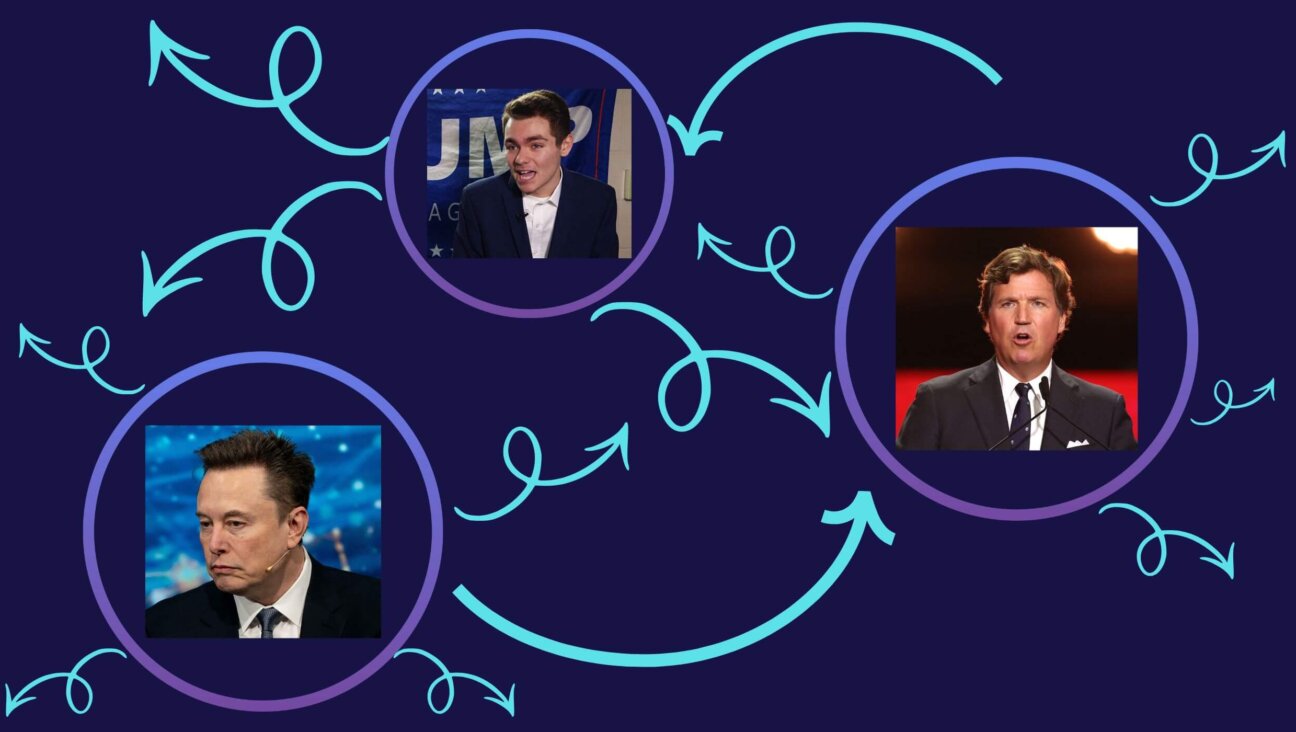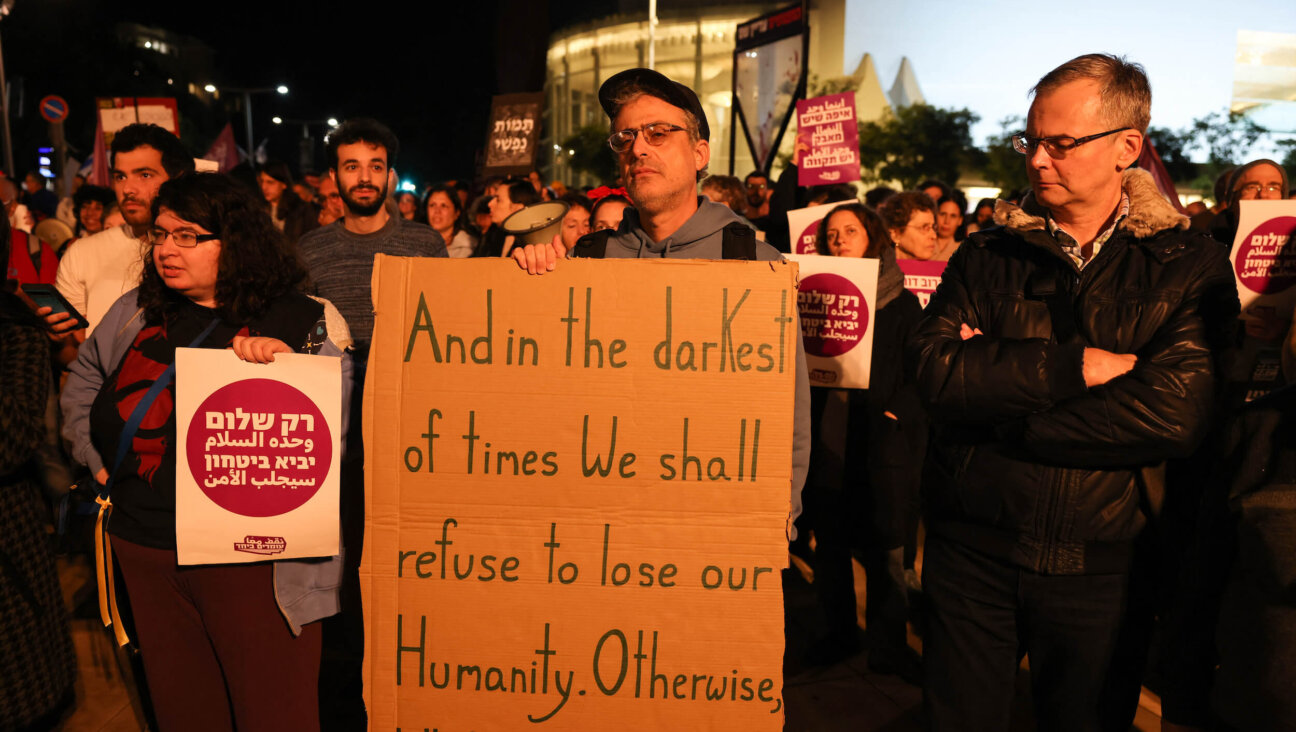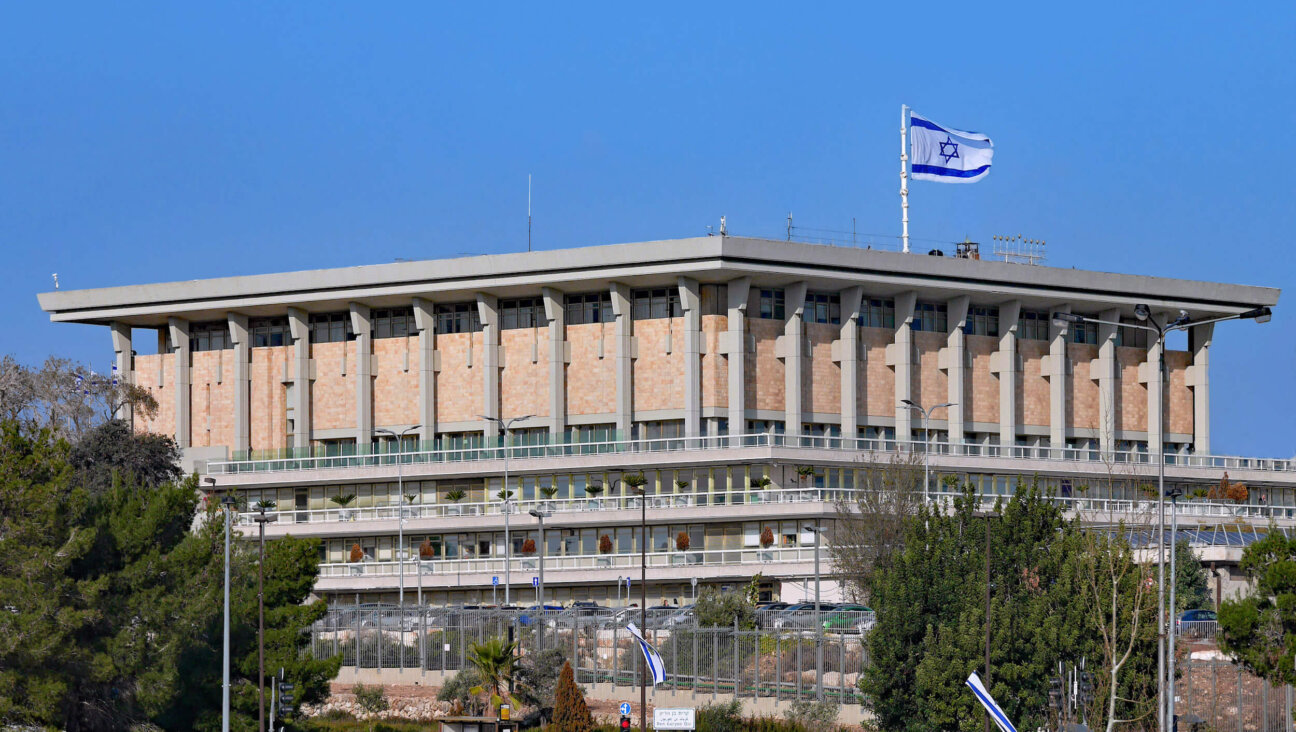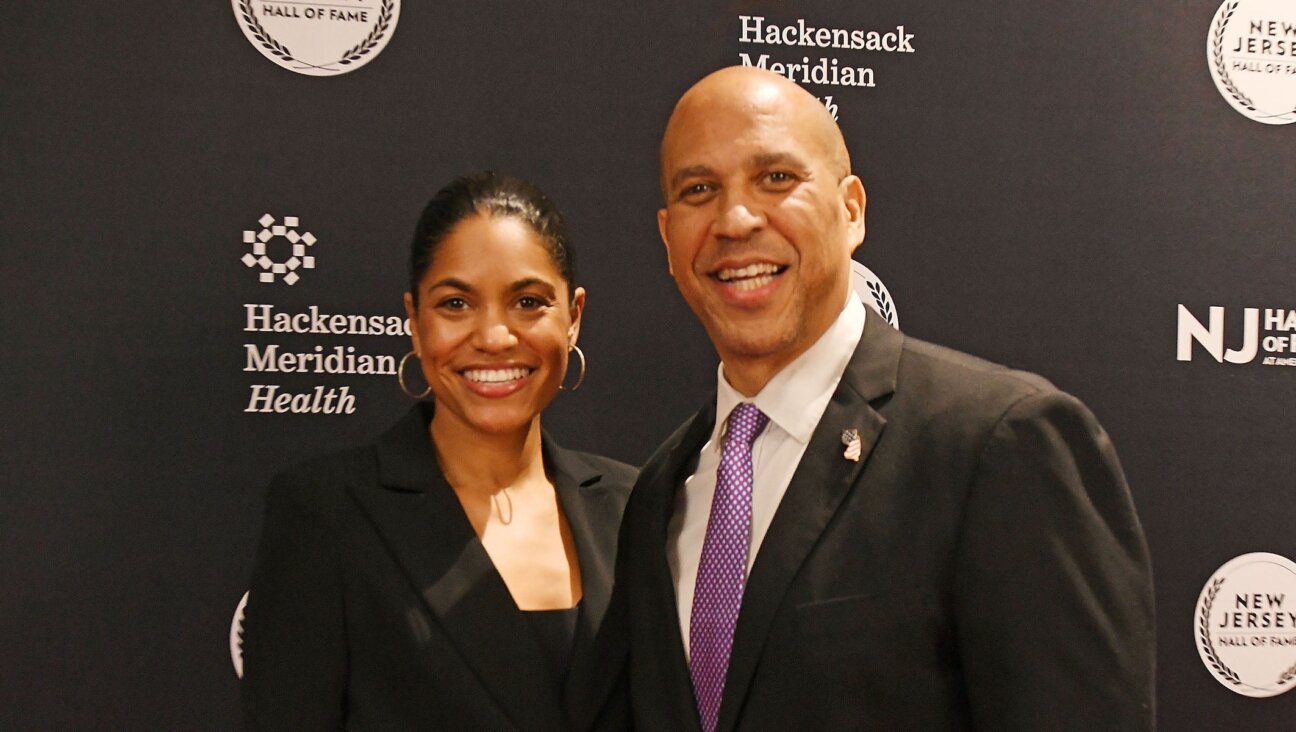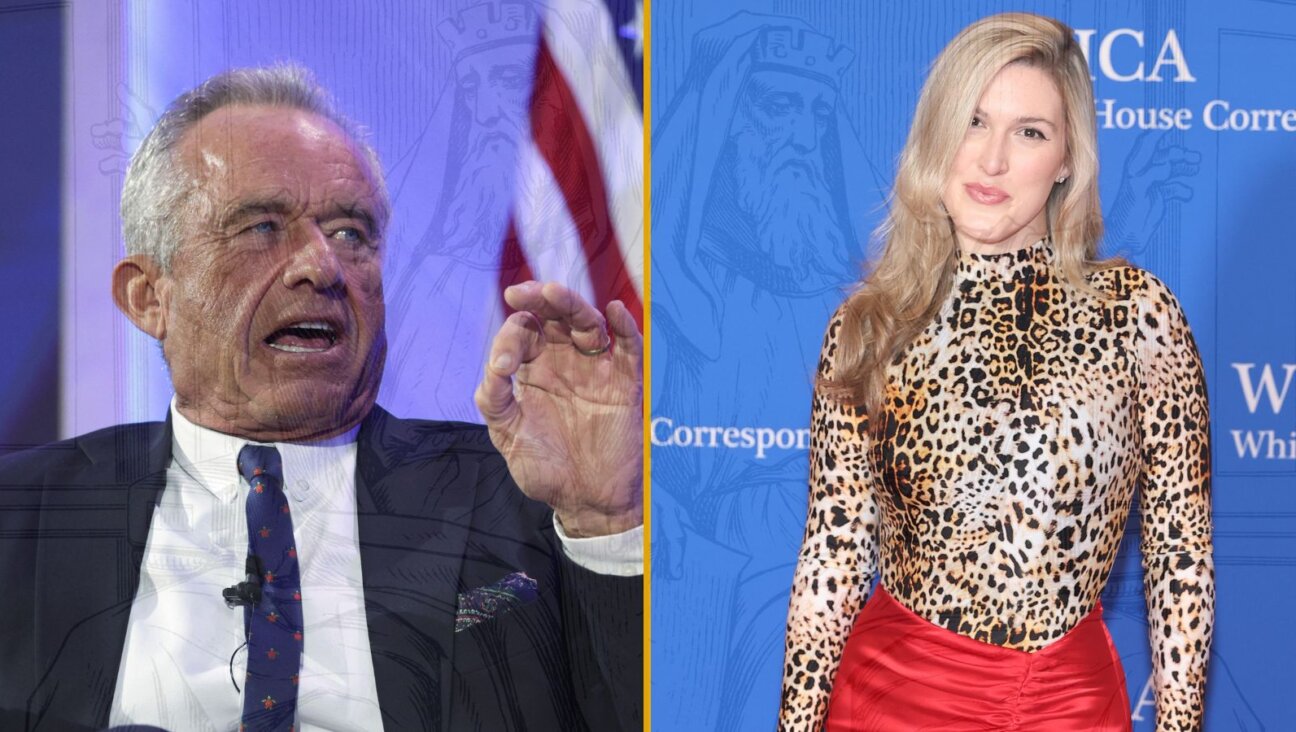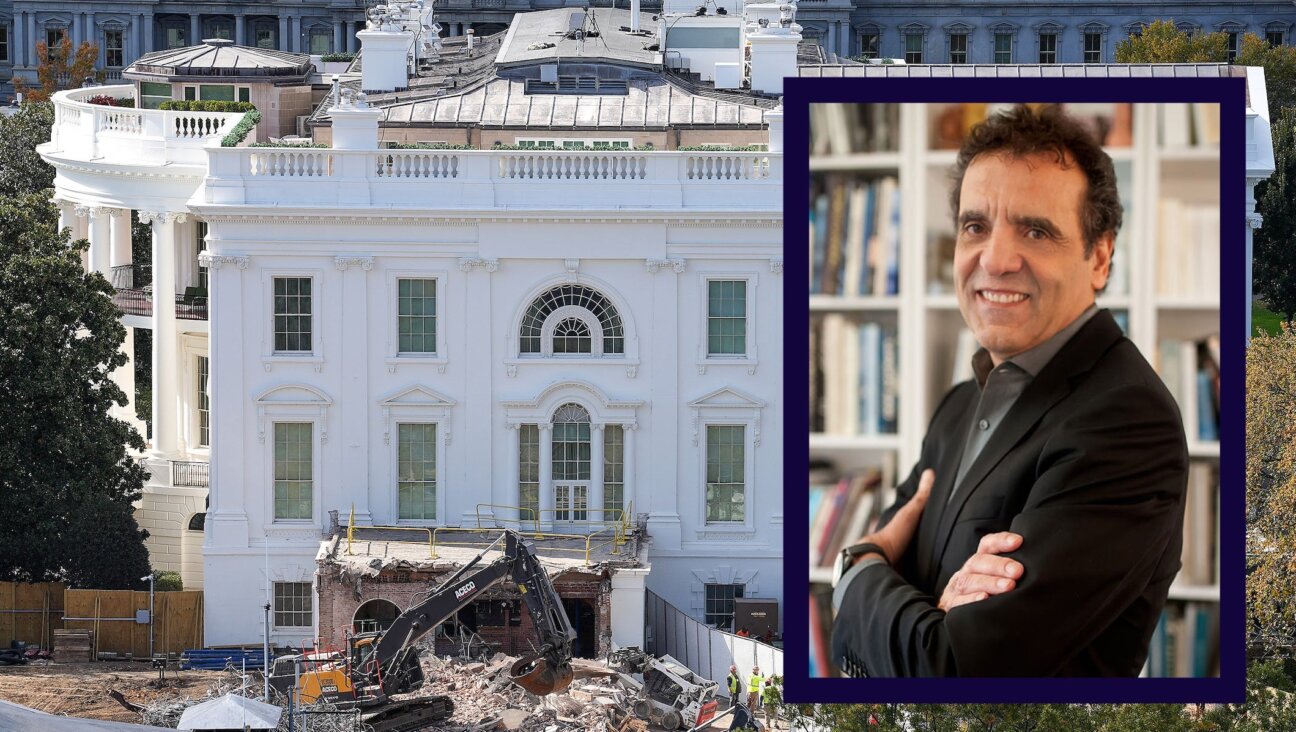Trump’s plans for Gaza could undermine the ceasefire. The hostages will pay the tragic price
Yes, we need a long-term plan for Gaza. But it must enable the hostages to come home
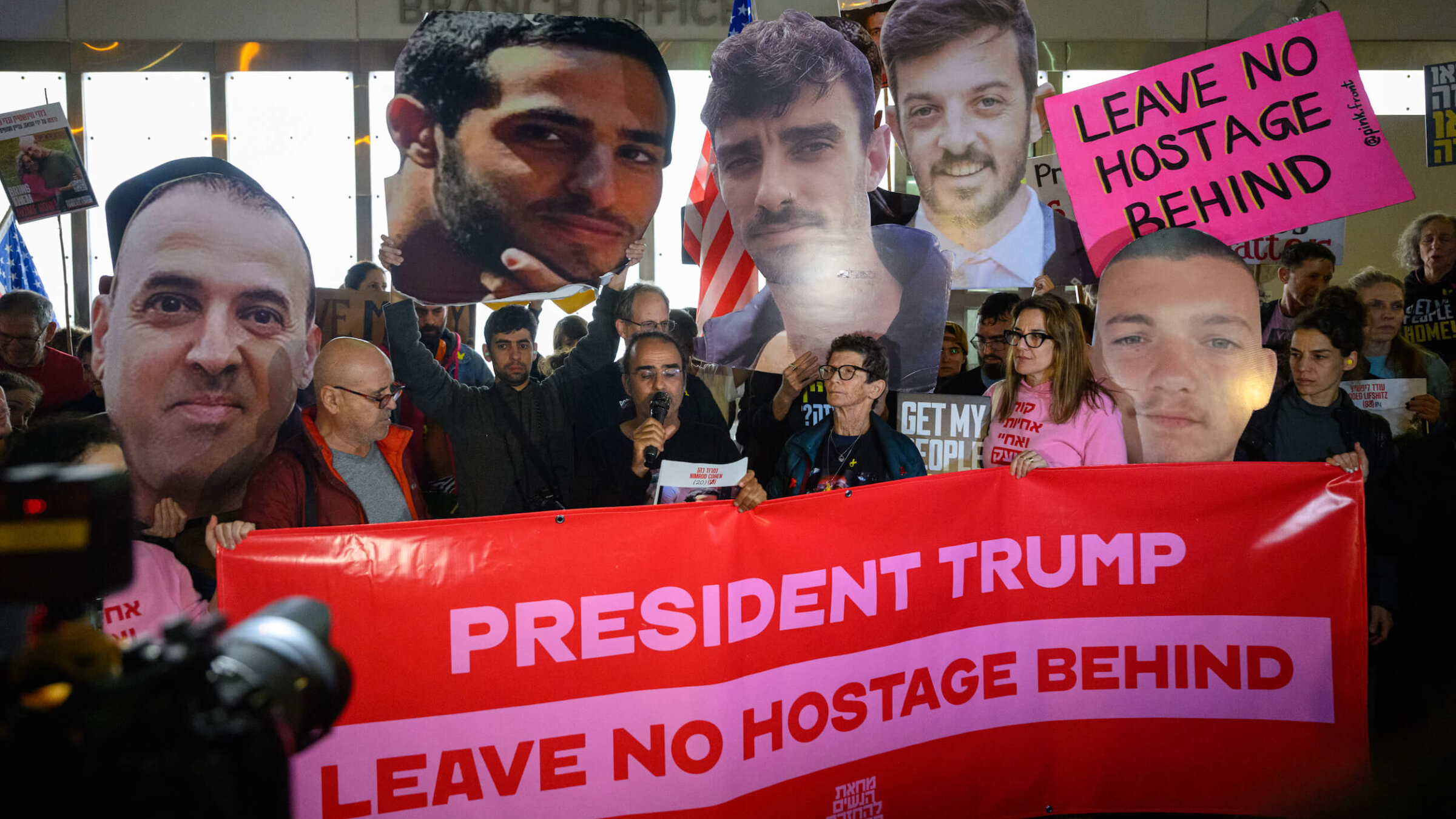
Demonstrators call for the hostage and ceasefire deal to continue outside the Tel Aviv branch office of the U.S. Embassy on Feb. 4. Photo by Alexi Rosenfeld/Getty Images
One of Israeli Prime Minister Benjamin Netanyahu’s goals in Washington, D.C., this week was to minimize talk of the unfolding ceasefire deal, and the full IDF withdrawal from Gaza that it will eventually require. And President Donald Trump more than delivered, offering a dramatic vision for Gaza’s future — defined by a U.S. takeover and forced relocation of Gaza’s civilians — that successfully sidelined more immediate questions about the state of the still-temporary ceasefire, the Israeli hostages’ future, and precisely how the war will end.
Trump’s proposal made headlines and drew swift rebukes. But the furor missed that Trump’s approach actually carries a real risk of endangering the 79 hostages who still remain in Gaza, at least 35 of whom are dead by Israel’s count. Regardless of the intention behind Trump’s statements, they may upend the ceasefire that has already allowed 18 Israeli and five Thai hostages to reunite with their families.
Many in Israel greeted Trump’s proposal with enthusiasm; according to Channel 13, 72% of Israelis support Trump’s proposal. It’s understandable that they might see evacuating Palestinians from Gaza — some or all, temporarily or permanently — and punting the question of Gaza’s future to the Americans as a great idea. After all, in the improbable scenario in which Trump pulls it off, it would mean no more war with Gaza, and no more headaches about the strip’s maintenance.
Plus, Israelis may feel reassured by Trump’s suggestion that he will work to get the rest of the hostages out, and his threat to become “somewhat more violent” if that doesn’t happen — a callback to his “all hell to pay” language from weeks back.
But the lives of the rest of the hostages are still in Hamas’ hands. They are unlikely to walk free without Hamas’ consent; with a few notable exceptions, military operations have been largely unsuccessful in freeing them, and have in certain cases actually endangered or killed them. Whether or not the U.S. and Israel actually intend to evacuate 2.3 million Palestinians in Gaza to unspecified destinations, and plant an American flag in Palestine Square, the message Trump’s championing of that proposal sends to Hamas is that Israel has no intention of actually leaving Gaza as long as Palestinians still live inside of it.
That message undermines the entire premise of the hostage deal, which is predicated on a ceasefire and staged IDF withdrawal. It’s especially perilous as, in coming days, the two sides will begin negotiating Phase 2 of the deal, which is intended to include a full IDF withdrawal from Gaza and an end to the war in exchange for the remaining living hostages.
Trump’s new focus on longer-term strategic questions of how to rebuild Gaza and end the threat of Hamas is commendable. The ceasefire is not a permanent solution. But his proposals, and Netanyahu’s embrace of them, have now made it hard to see how Phase 2 negotiations could end in success. The raw fact is that Israel’s political leadership has endorsed a position that is fundamentally incompatible with that of Hamas.
Some may argue that the threat of Gaza being ethnically cleansed and taken over by the U.S. could scare Hamas into softening its terms. But Trump notably did not frame his vision as a threat to Hamas. If anything, the pressure was directed at U.S. partners in the region to come up with something better.
Given Hamas’ callous disregard for Palestinian lives, its likely response will be to double down on the ethos of muqawama, or violent resistance, and leverage the optics of Palestinians being displaced to bolster its activity and its ideology across the region.
The clear winner here appears to be Netanyahu. The prime minister has been reportedly seeking to avoid ending the war, which would alienate the far-right political partners he needs to maintain his coalition. Pressure from former President Joe Biden and Trump was the main reason he entertained the prospect at all.
Now, Trump has put an idea on the table that Netanyahu can comfortably support, while appeasing his far-right partners and scuttling negotiations with Hamas.
This is terrible news for the several dozen hostages whose fate depends on a Phase 2 agreement. But there is also real concern for the remainder of the 33 hostages who are set to be released under Phase 1. The current deal was never intended to be a one-off or partial deal, but rather the first step toward a full agreement that results in a “permanent” end to the war. Netanyahu’s endorsement of the Trump plan contradicts that principle, meaning that Hamas could renege on the agreed-upon hostage releases, and the temporary ceasefire deal could collapse before its March 1 expiration date.
According to the Israeli news outlet Haaretz, Israeli officials are already warning that this is a possibility.
The same Channel 13 poll that found broad Israeli support for Trump’s plan found that 66% of Israelis still believe that Israel should try to achieve Phase 2 of the hostage deal. A large number of Israelis clearly care deeply about the hostages, and see their return as a moral and national imperative given that the state’s founding ethos centered on protecting Jewish lives.
What all this highlights: There is no easy way to reconcile the goal of destroying Hamas with the necessity of negotiating with it. An end to the war as envisioned in Biden’s original ceasefire plan would allow for the hostages to be released while creating an opening for a day-after plan with regional backing that includes deradicalization, an interim administration, and eventual non-Hamas Palestinian self-rule.
Transferring 2.3 million Palestinians out of Gaza not only crosses a clear moral redline, but also represents an abandonment of the Israeli civilians the country failed to protect from a terror invasion on Oct. 7. Trump needs to pull back, at least for now, lest their lives prove the cost of his grandstanding.
